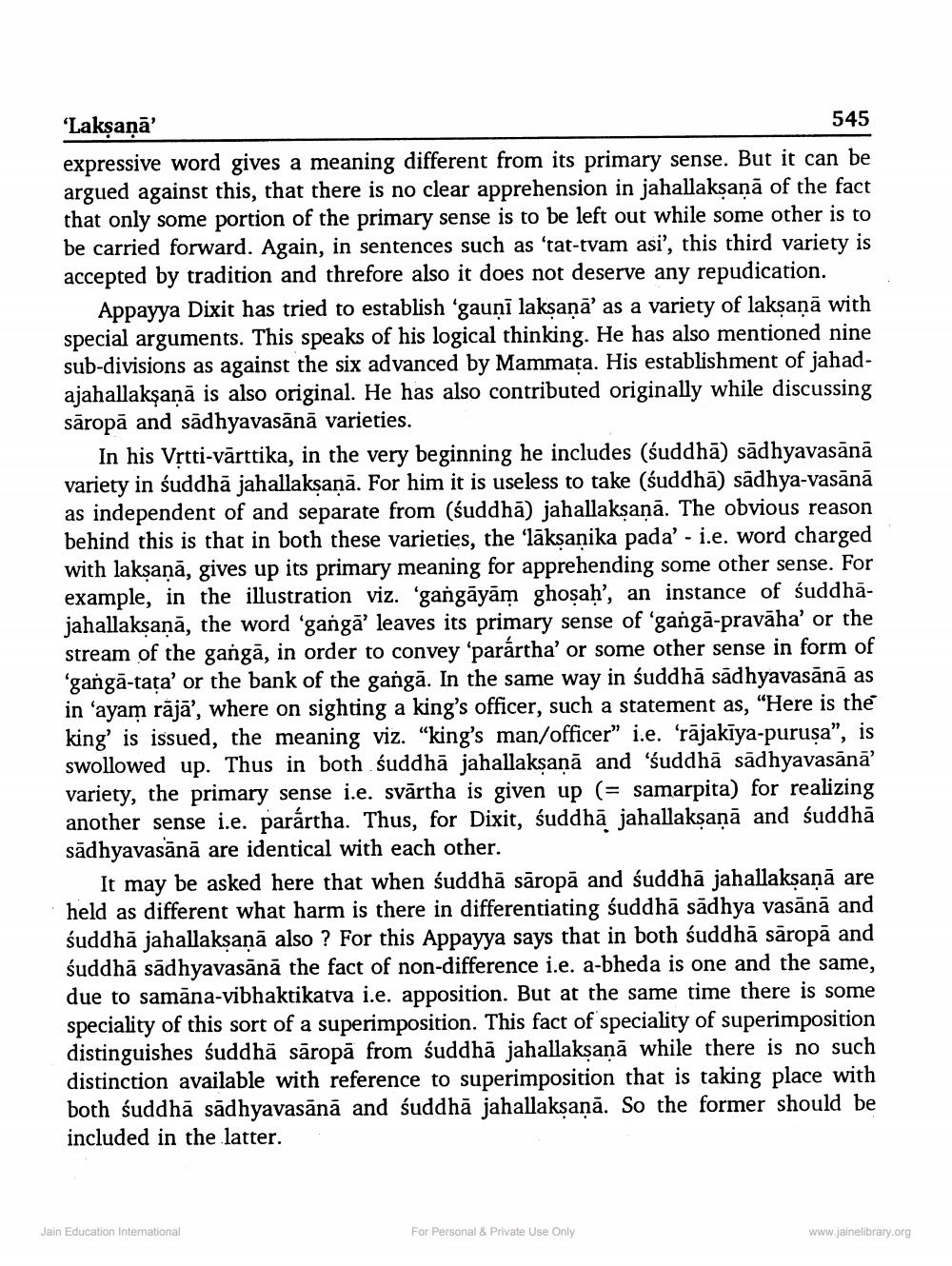________________
"Lakşaņā'
545 expressive word gives a meaning different from its primary sense. But it can be argued against this, that there is no clear apprehension in jahallaksanā of the fact that only some portion of the primary sense is to be left out while some other is to be carried forward. Again, in sentences such as 'tat-tvam asi', this third variety is accepted by tradition and threfore also it does not deserve any repudication.
Appayya Dixit has tried to establish 'gauni laksana' as a variety of laksana with special arguments. This speaks of his logical thinking. He has also mentioned nine sub-divisions as against the six advanced by Mammata. His establishment of jahadajahallaksanā is also original. He has also contributed originally while discussing sāropā and sādhyavasānā varieties.
In his Vrtti-vārttika, in the very beginning he includes (śuddhā) sādhyavasānā variety in śuddhā jahallaksanā. For him it is useless to take (śuddha) sādhya-vasānā as independent of and separate from (śuddhā) jahallaksaņā. The obvious reason behind this is that in both these varieties, the 'laksanika pada' - i.e. word charged with laksaņā, gives up its primary meaning for apprehending some other sense. For example, in the illustration viz. 'gangāyām ghosah', an instance of suddhājahallaksanā, the word 'gangā' leaves its primary sense of 'gangā-pravāha' or the stream of the gangā, in order to convey 'parártha' or some other sense in form of ‘gangā-tata' or the bank of the gangā. In the same way in śuddhā sādhyavasānā as in ‘ayam rājā', where on sighting a king's officer, such a statement as, “Here is the king' is issued, the meaning viz. “king's man/officer” i.e. frājakīya-purusa”, is swollowed up. Thus in both śuddhā jahallaksanā and 'śuddhā sādhyavasānā variety, the primary sense i.e. svārtha is given up (= samarpita) for realizing another sense i.e. parártha. Thus, for Dixit, śuddhā jahallaksaņā and suddhā sādhyavasānā are identical with each other.
It may be asked here that when suddhā sāropā and suddhā jahallaksaņā are held as different what harm is there in differentiating suddhā sādhya vasānā and śuddhā jahallaksaņā also ? For this Appayya says that in both śuddhā sāropā and suddhā sadhyavasānā the fact of non-difference i.e. a-bheda is one and the same, due to samāna-vibhaktikatva i.e. apposition. But at the same time there is some speciality of this sort of a superimposition. This fact of speciality of superimposition distinguishes śuddhā sāropā from śuddhā jahallaksaņā while there is no such distinction available with reference to superimposition that is taking place with both śuddhā sādhyavasānā and suddhā jahallaksanā. So the former should be included in the latter.
Jain Education International
For Personal & Private Use Only
www.jainelibrary.org




